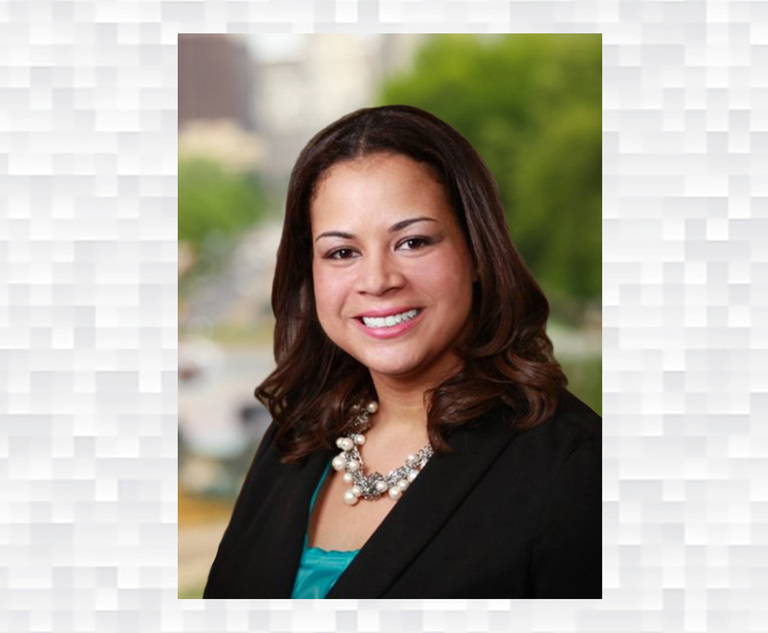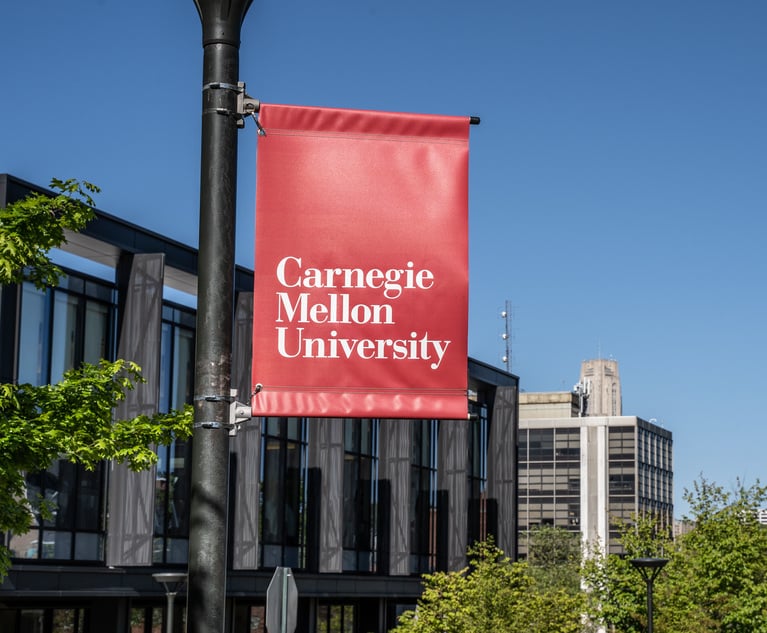 Melissa Hazell Davis of Griesing Law. Courtesy photo
Melissa Hazell Davis of Griesing Law. Courtesy photo Stagnation and the Law: When Diversity Efforts Flounder
The diversity that exists in law school classrooms across this country does not translate to the law firms who hire those students, and unsurprisingly, the higher up the ladder at law firms one looks, the less diverse its makeup.
November 23, 2022 at 11:50 AM
6 minute read
By all appearances, the legal world is more diverse than ever. Firms tout their diversity efforts by featuring their diverse talent in any and all pictures published in their literature or on social media, releasing statements and engaging in marketing efforts to "celebrate" diverse achievements and holidays, and including diverse members in pitches and requests for information to clients—new and old. The statistics and experiences of diverse lawyers tell a different story. When questioned, attorneys of color (and especially women of color) describe a profession that is disinterested in making the genuine changes it needs to truly diversify the landscape but is instead just "phoning" it in to appear socially "woke" and aware to those watching.
Over the last decade, there has been an immense effort to diversify the legal profession but despite those efforts, the numbers reveal that the profession remains demographically stagnant—comprised mainly of white, older males. The diversity that exists in law school classrooms across this country does not translate to the law firms who hire those students, and unsurprisingly, the higher up the ladder at law firms one looks, the less diverse its makeup. On June 22, 2020, the ABA released a new report, "Left Out and Left Behind: The Hurdles, Hassles and Heartaches of Achieving Long Term Legal Careers for Women of Color," found that even though women of color comprised 14% of all associates, the percentage of women of color partners has remained stuck below 3.5%. Women lawyers of color surveyed were far more likely to want to leave the profession than their white colleagues; were more likely to be subjected to both implicit and explicit bias; and were more likely to report factors that blocked their "access to success," including access to business development opportunities, being perceived as less committed to career and being denied or overlooked for promotion. These sentiments reflect how attorneys of color—especially women of color—feel unwanted by their colleagues and pushed out of the profession. In discussing the impact of racial and gender biases on women and women of color in the legal profession, a 2018 ABA report from the Commission on Women in the Profession found that 57% of the women of color surveyed had been confused with custodial, administrative or courtroom staff, compared to just 7% of white men regularly confronting assumptions that they were unlikely to be lawyers. Most recently, the Maine State Bar Association surveyed its 5,500 attorneys and the results revealed that Maine's BIPOC (Black, Indigenous, and people of color) legal community feels largely invisible to and face biases from both members of the bar, the judicial bench and clients.
This content has been archived. It is available through our partners, LexisNexis® and Bloomberg Law.
To view this content, please continue to their sites.
Not a Lexis Subscriber?
Subscribe Now
Not a Bloomberg Law Subscriber?
Subscribe Now
NOT FOR REPRINT
© 2025 ALM Global, LLC, All Rights Reserved. Request academic re-use from www.copyright.com. All other uses, submit a request to [email protected]. For more information visit Asset & Logo Licensing.
You Might Like
View All
Sanctioned Penn Law Professor Amy Wax Sues University, Alleging Discrimination
5 minute read
Disjunctive 'Severe or Pervasive' Standard Applies to Discrimination Claims Against University, Judge Rules
5 minute read
Newly Formed DEI Practices Expect Heightened Demand During Trump Administration
Law Firms Mentioned
Trending Stories
- 1US DOJ Threatens to Prosecute Local Officials Who Don't Aid Immigration Enforcement
- 2Kirkland Is Entering a New Market. Will Its Rates Get a Warm Welcome?
- 3African Law Firm Investigated Over ‘AI-Generated’ Case References
- 4Gen AI and Associate Legal Writing: Davis Wright Tremaine's New Training Model
- 5Departing Attorneys Sue Their Former Law Firm
Who Got The Work
J. Brugh Lower of Gibbons has entered an appearance for industrial equipment supplier Devco Corporation in a pending trademark infringement lawsuit. The suit, accusing the defendant of selling knock-off Graco products, was filed Dec. 18 in New Jersey District Court by Rivkin Radler on behalf of Graco Inc. and Graco Minnesota. The case, assigned to U.S. District Judge Zahid N. Quraishi, is 3:24-cv-11294, Graco Inc. et al v. Devco Corporation.
Who Got The Work
Rebecca Maller-Stein and Kent A. Yalowitz of Arnold & Porter Kaye Scholer have entered their appearances for Hanaco Venture Capital and its executives, Lior Prosor and David Frankel, in a pending securities lawsuit. The action, filed on Dec. 24 in New York Southern District Court by Zell, Aron & Co. on behalf of Goldeneye Advisors, accuses the defendants of negligently and fraudulently managing the plaintiff's $1 million investment. The case, assigned to U.S. District Judge Vernon S. Broderick, is 1:24-cv-09918, Goldeneye Advisors, LLC v. Hanaco Venture Capital, Ltd. et al.
Who Got The Work
Attorneys from A&O Shearman has stepped in as defense counsel for Toronto-Dominion Bank and other defendants in a pending securities class action. The suit, filed Dec. 11 in New York Southern District Court by Bleichmar Fonti & Auld, accuses the defendants of concealing the bank's 'pervasive' deficiencies in regards to its compliance with the Bank Secrecy Act and the quality of its anti-money laundering controls. The case, assigned to U.S. District Judge Arun Subramanian, is 1:24-cv-09445, Gonzalez v. The Toronto-Dominion Bank et al.
Who Got The Work
Crown Castle International, a Pennsylvania company providing shared communications infrastructure, has turned to Luke D. Wolf of Gordon Rees Scully Mansukhani to fend off a pending breach-of-contract lawsuit. The court action, filed Nov. 25 in Michigan Eastern District Court by Hooper Hathaway PC on behalf of The Town Residences LLC, accuses Crown Castle of failing to transfer approximately $30,000 in utility payments from T-Mobile in breach of a roof-top lease and assignment agreement. The case, assigned to U.S. District Judge Susan K. Declercq, is 2:24-cv-13131, The Town Residences LLC v. T-Mobile US, Inc. et al.
Who Got The Work
Wilfred P. Coronato and Daniel M. Schwartz of McCarter & English have stepped in as defense counsel to Electrolux Home Products Inc. in a pending product liability lawsuit. The court action, filed Nov. 26 in New York Eastern District Court by Poulos Lopiccolo PC and Nagel Rice LLP on behalf of David Stern, alleges that the defendant's refrigerators’ drawers and shelving repeatedly break and fall apart within months after purchase. The case, assigned to U.S. District Judge Joan M. Azrack, is 2:24-cv-08204, Stern v. Electrolux Home Products, Inc.
Featured Firms
Law Offices of Gary Martin Hays & Associates, P.C.
(470) 294-1674
Law Offices of Mark E. Salomone
(857) 444-6468
Smith & Hassler
(713) 739-1250






